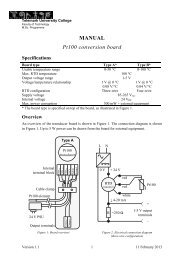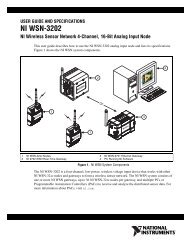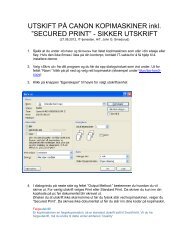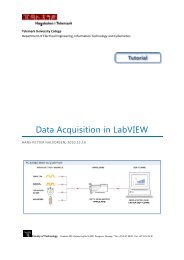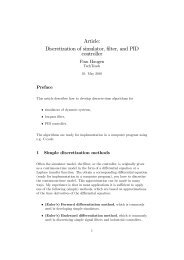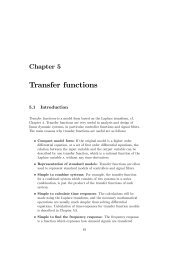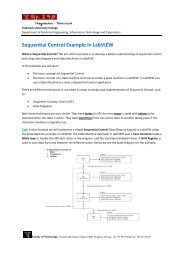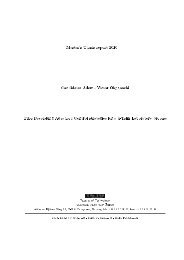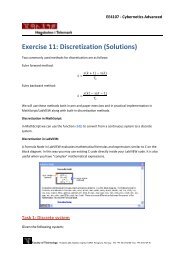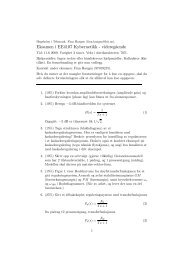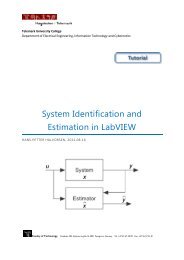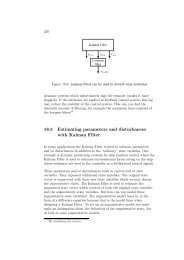State estimation with Kalman Filter
State estimation with Kalman Filter
State estimation with Kalman Filter
Create successful ePaper yourself
Turn your PDF publications into a flip-book with our unique Google optimized e-Paper software.
F. Haugen: Kompendium for Kyb. 2 ved Høgskolen i Oslo 109<br />
3. Calculate the so-called innovation process or variable – it is actually<br />
the measurement estimate error – as the difference between the<br />
measurement y(k) and the predicted measurement y p (k):<br />
Innovation variable:<br />
e(k) =y(k) − y p (k) (8.36)<br />
4. Calculate the corrected state estimate x c (k) by adding the corrective<br />
term Ke(k) to the predicted state estimate x p (k):<br />
Corrected state estimate:<br />
x c (k) =x p (k)+Ke(k) (8.37)<br />
Here, K is the <strong>Kalman</strong> <strong>Filter</strong> gain. The calculation of K is described<br />
below.<br />
Note: Itisx c (k) that is used as the state estimate in applications 1 .<br />
About terminology: The corrected estimate is also denoted the<br />
posteriori estimate because it is calculated after the present<br />
measurement is taken. It is also denoted the measurement-updated<br />
estimate.<br />
Due to the measurement-based correction term of the <strong>Kalman</strong> <strong>Filter</strong>,<br />
you can except the errors of the state estimates to be smaller than if<br />
there were no such correction term. This correction can be regarded<br />
as a feedback correction of the estimates, and it is well known from<br />
dynamic system theory, and in particular control systems theory,<br />
that feedback from measurements reduces errors. This feedback is<br />
indicated in Figure 8.1.<br />
5. Calculate the predicted state estimate for the next time step,<br />
x p (k +1), using the present state estimate x c (k) and the known<br />
input u(k) in process model:<br />
Predicted state estimate:<br />
x p (k +1)=f[x c (k), u(k)] (8.38)<br />
(It is assumed that the noise term Gv(k) is not known or is<br />
unpredictable, since it is random, so it can not be used in the<br />
calculation of the state estimate.)<br />
About terminology: The predicted estimate is also denoted the priori<br />
estimate because it is calculated before the present measurement is<br />
taken. It is also denoted the time-updated estimate.



